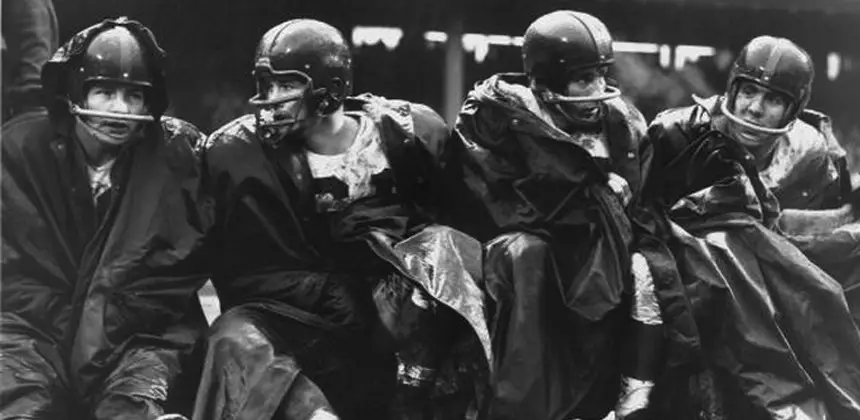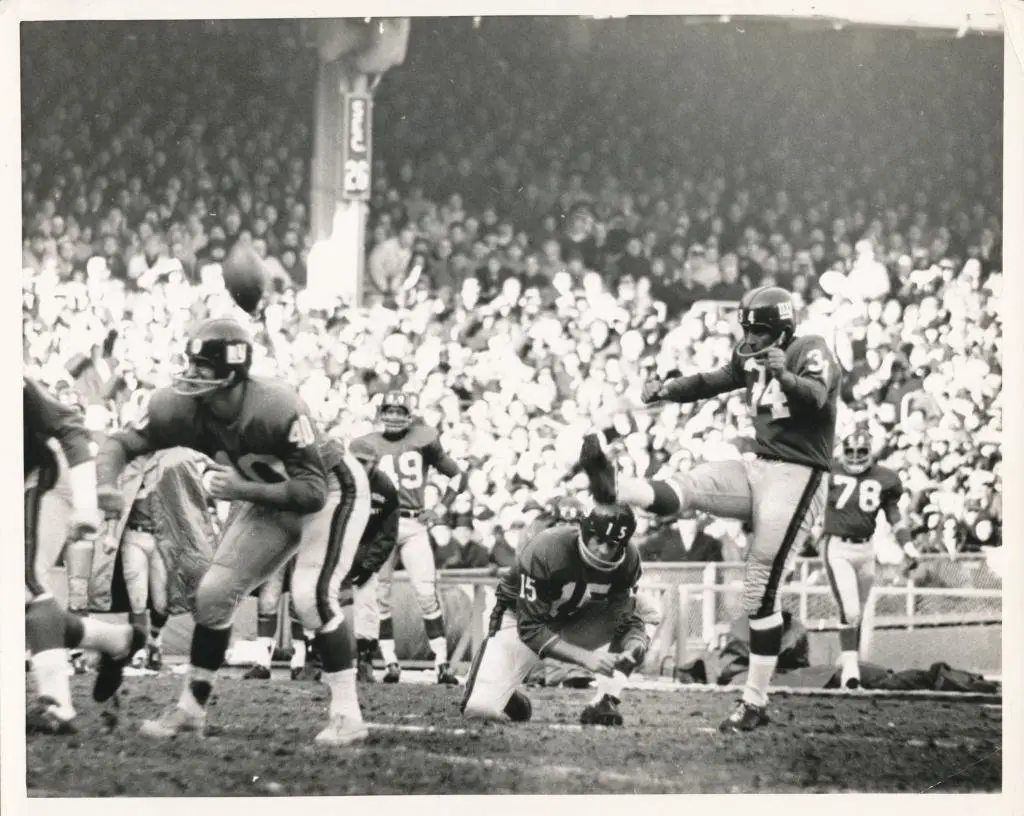
by Larry Schmitt | May 30, 2015 | Articles, New York Giants History
By Larry Schmitt with contributions from Daniel Franck and Dr. Bruce Gilbert The 1956 season was a watershed moment for football in New York. Filled with potent portent, the campaign proved to be the penultimate piece of the puzzle for the ultimate explosion of pro...

by Larry Schmitt | Dec 31, 2014 | Articles, New York Giants History
By Larry Schmitt with contributions from Daniel Franck and Rev. Mike Moran When most Giants fans think about a kicker making a clutch kick in a pressure situation, they most likely recall Matt Bahr or Lawrence Tynes kicking the Giants to the Super Bowl. There was a...




